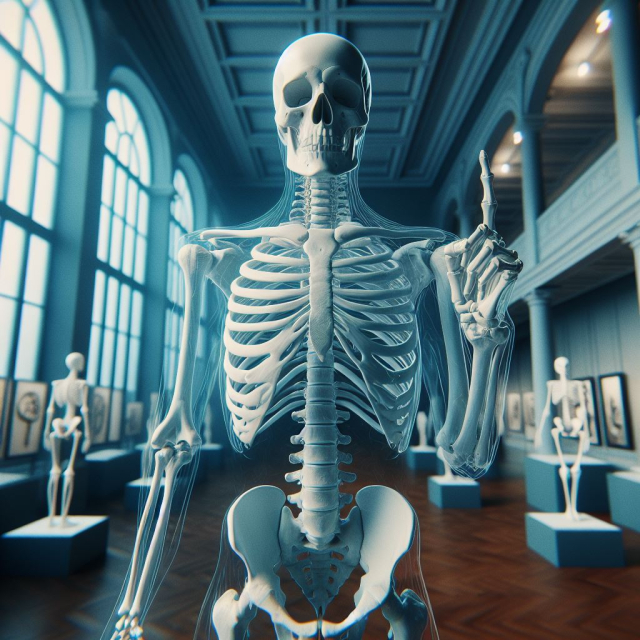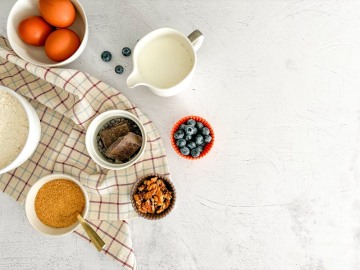The bone system, also known as the skeletal system, is fundamental to human life, providing the necessary structure and support for our body. Made up of bones, cartilage, ligaments and joints, this system not only gives us shape, but also performs vital functions, such as protecting internal organs, producing blood cells and storing minerals. In this article, we will explore in depth the anatomy and functions of the skeletal system, its development and maintenance, as well as common diseases and conditions that can affect it.
Anatomy of the Bone System.
The adult human skeleton consists of 206 bones, which are divided into two main categories: the axial skeleton and the appendicular skeleton.
Axial Skeleton.
The axial skeleton includes 80 bones and forms the central axis of the body. Understands:
- Skull: Protects the brain and supports facial structures.
- Vertebral Column: Made up of 33 vertebrae (in childhood), it provides support and flexibility.
- Ribs and Sternum: Protect the vital organs of the chest, such as the heart and lungs.
Appendicular Skeleton.
The appendicular skeleton consists of 126 bones and is made up of:
- Upper Extremities: Humerus, radius, ulna, bones of the hand and wrist.
- Lower Extremities: Femur, tibia, fibula, bones of the foot and ankle.
- Shoulder and Pelvic Girdle: Connect the extremities to the axial skeleton.
Functions of the Bone System.
The skeletal system fulfills several critical functions for the human body:
Support and Movement.
Bones provide a rigid structure that supports the body and facilitates movement by serving as anchors for muscles. Joints allow mobility, and the coordinated action of bones and muscles allows walking, running, and other physical activities.
Organ Protection.
The skeleton protects vital internal organs. For example, the skull protects the brain, the ribs protect the heart and lungs, and the vertebral column protects the spinal cord.
Production of Blood Cells.
Red bone marrow, located in some bones, is the site of production of blood cells, including red blood cells, white blood cells, and platelets, in a process known as hematopoiesis.
Mineral Storage.
Bones act as reservoirs of minerals, mainly calcium and phosphorus, which are essential for various bodily functions. These minerals can be released into the bloodstream depending on the body's needs.
Regulation of Metabolism.
Bone tissue is also involved in regulating metabolism by releasing a hormone called osteocalcin, which influences blood sugar regulation and fat deposition.
Development and Maintenance of the Bone System.
Bone Development.
The development of the skeletal system begins in the embryonic stage with the formation of cartilage, which subsequently becomes bone through the process of ossification. There are two main types of ossification:
- Endochondral Ossification: Occurs when cartilage is replaced by bone. It is the main process in the development of long bones.
- Intramembranous Ossification: Occurs in the development of the flat bones of the skull, where the bone is formed directly without an intermediate cartilaginous phase.
Bone Maintenance and Remodeling.
The skeletal system is constantly remodeling, a process in which old bone is replaced by new bone. This process is essential to repair microdamage and adapt the bone structure to functional needs. Bone remodeling involves the coordinated action of:
- Osteoclasts: Cells that break down bone.
- Osteoblasts: Cells that form new bone.
Factors That Influence Bone Health.
Several factors influence bone health, including:
- Nutrition: A diet rich in calcium and vitamin D is crucial for the formation and maintenance of healthy bones.
- Exercise: Physical activity, especially weight-bearing exercise, strengthens bones and improves bone density.
- Hormones: Hormones, such as estrogen and testosterone, play an important role in regulating bone metabolism.
- Genetics: Genetic predisposition can influence bone density and health.
Common Diseases and Conditions of the Bone System.
Despite its strength, the skeletal system can be affected by various diseases and conditions.
Osteoporosis.
Osteoporosis is a disease characterized by decreased bone density and increased risk of fractures. It is more common in postmenopausal women due to decreased estrogen, but it can also affect men and younger people.
Arthritis.
Arthritis is an inflammation of the joints that can cause pain and stiffness. There are several types of arthritis, with osteoarthritis and rheumatoid arthritis being the most common. Osteoarthritis is caused by cartilage wear and tear, while rheumatoid arthritis is an autoimmune disease.
Metabolic Bone Diseases.
Metabolic bone diseases, such as rickets in children and osteomalacia in adults, are caused by deficiencies in vitamin D, calcium or phosphorus, resulting in weak bones and deformities.
Fractures.
Bone fractures can occur due to trauma or bone weakness from diseases such as osteoporosis. Fracture healing involves the formation of a bone callus and the gradual remodeling of the bone until it is completely restored.
Bone Cancer.
Bone cancer can be primary (originating in the bone) or secondary (metastasis from another cancer). Osteosarcoma is the most common type of primary bone cancer, mainly affecting adolescents and young adults.
The skeletal system is an essential component of the human body, providing support, protection and functionality. Its development, maintenance and health are crucial for an active and healthy life. Through a balanced diet, regular exercise and proper medical care, we can maintain the strength and integrity of our skeletal system, preventing disease and ensuring a better quality of life. Understanding and caring for our skeletal system is essential for longevity and general well-being.






